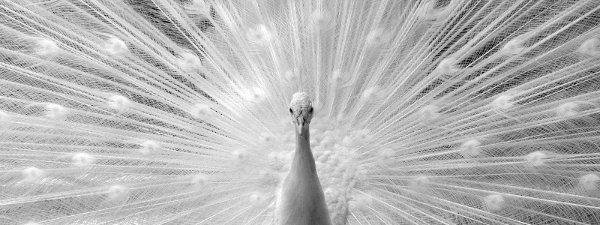Sexual Ornament

We didn’t grow a large brain to help ourselves find better food, fend from predators or to change the very landscape of the planet, like we are doing today. We evolved a large brain hundreds of thousands of years before we did all that.
In his book Descent of Man, Charles Darwin discusses two types of evolutionary pressures: Natural Selection and Sexual Selection. Natural selection arises from the struggle to survive (fangs and hooves). Sexual selection (antlers and peacock tail feathers) arises from pressure to reproduce. There are two types of sexual selection. One is challenge between the same sex to outwit one another (intrasex). Other is a challenge to charm and attract the opposite sex more successfully (intersex).
A feature that evolved due to intersex sexual pressure is called a sexual ornament. It is usually un-fakeable. For example, only a healthy antelope can afford huge antlers. Similarly, only a healthy peacock can afford a long and lustrous tail feathers. To start with, an animal needs plenty of nutrition (i.e. physical fitness) to build and maintain a sexual ornament in top condition. Sexual ornaments also adds more handicap, often in the form of burden over animal’s ability to move around freely.
For the huge cost that an animal suffers, sexual ornaments usually have zero utility value. They don’t help the animal to fend a predator, catch/gather food, shelter from nature or increase the longevity. If at all, sexual ornaments increases the animal’s chances of dying an early death! If you think for a moment, there is a common theme for all sexual ornaments: Only I can afford the wastage!
In his wonderful book The Mating Mind, psychologist Geoffrey Miller puts forward a hypothesis that the brain developed as a sexual ornament. During the initial days, Miller proposes, women selected men for men’s ability to excite and entertain the women. Over time, pressurized by choosy women, men ended up developing larger and larger brain. Of course, women were not left behind either. They needed to evolve an equally intelligent brain to appreciate what men produced.
These are some of the implications of Miller’s ‘ornament brain’:
- In a romantic situation, wastage (and luxury) is essential. Waste is what keeps a fitness indicator honest! A act or gift of high romance usually carries huge cost on the giver, but zero utility value to the receiver (e.g. diamond, flower, poetry, etc.)
- Brain evolved as an entertainment system; we eventually hijacked it for doing rocket science
- All activities that put a high demand on the brain are perceived as sexy. Examples are singers, sportsmen (excelling in sports is a matter of the brain; not just the brawn), actors, poets, etc. Of course, if you work in Intel you might find nerdyness sexy too!
- Men are major producers and women are major consumers
- While men are usually busy searching for women who would appreciate their sexual ornament, women are busy sifting through all suitors. It is wrong to think that women don’t actively participate in the mate selection process.
- Monogamous species do not have to develop sexual ornamentation (in all monogamous species, both the sexes look identical). Humans developed sexual ornamentation because they were (moderately) polygynous (at best, serially monogamous) by nature.